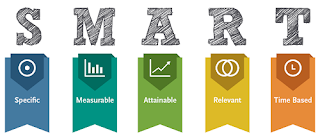Effective Employee Goal Setting is the Key to High Performance Culture
Performly, 2017-09-24 17:36:25

All businesses, in general, have one primary goal, which is a success. Most businesses see dramatic success and obvious improvement in performance on both the employee and business levels when they set SMART goals and closely link them to the company’s overall strategy and direction. Thus, effective employee goal setting, aligning and tracking those goals through actions and results are prominent and critical to better employee and business execution, which in turn increases businesses’ possibility of success.
It is clear now that helping employees set and reach goals is a critical part of every manager’s job. Employees want to see how their work contributes to larger company objectives, and setting the right goals makes this connection obvious for them, and for their manager. Goal setting is particularly important as a mechanism for providing ongoing and year-end feedback. By establishing and monitoring goals, managers can give their subordinates genuine input on their performance while motivating them to achieve more.
Although setting goals is often an essential and significant aspect of a performance appraisal system, ensuring that these goals are suitable and actual is what constitutes effective performance management.
The setting of goals begins with communication between the manager and employee. The employee should be prepared to discuss their beliefs about what they want to achieve and the manager should be prepared to discuss areas of development to work on to meet the team and company goals and strategy. Then, the manager and employee can meet and discuss what goals are most appropriate for the employee. These goals can then be documented so that both parties are clear on the expectations of performance.
To set effective goals, businesses need to consider the following dimensions to ensure having an optimum performance on the employee and business levels, such essential dimensions are: Goal setting Process, Aligning Goals, and Tracking goals.
Goal Setting Process

One of the approaches used is the SMART model. According to this approach, goals should have the following elements:
Specific: the goal should clearly state what is to be achieved
Measurable: accomplishments should be able to be measured according to a standard
Attainable: Goals should be challenging yet attainable and realistic
Relevant: Goals should have a direct and clear link to company goals
Time-Based: goals should have timelines with clear due dates and milestones
Goal Alignment
By clearly communicating your strategic business goals across the company, you ensure that each member of the organization can see and grasp the business strategic direction and have a clear understanding of how their job fits in with the “Big Picture”. As a part of your Goal alignment strategy, you should allow managers to have access to other departments’ goals through a transparent strategy; your business can drastically decrease redundancy as well as finding synergies among departments for mutual support. Now your business can be more agile by executing faster while being more flexible and adaptable.
Tracking Goals
It is a natural step and extension to setting and aligning organizational goals. Goals tracking has twofold benefits on both the employee and manager levels. For employees, it is important to keep track and document performance and goals progress especially when management is not aware of employee performance during reviews. On the manager level, it is empowering them to keep track of goals progress and support with assistance and resources when needed. The tracking process helps businesses to organize, manage and review employee goals as well as keeping the organization’s members focused on meaningful tasks.
Success in business is directly related to high-performing employees and effective goal setting is the first step to create a high-performance culture in your organization. The winning formula for effective goal setting is achieved through a synergy of several elements as transparency, alignment, goal traction, and SMART goal setting.


























-2021-07-27-18-01-18.jpg)
-2021-05-18-10-54-11.png)
-2021-05-18-10-51-35.png)
-2021-05-18-10-49-13.png)
-2021-05-18-10-43-11.png)

